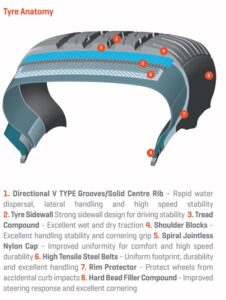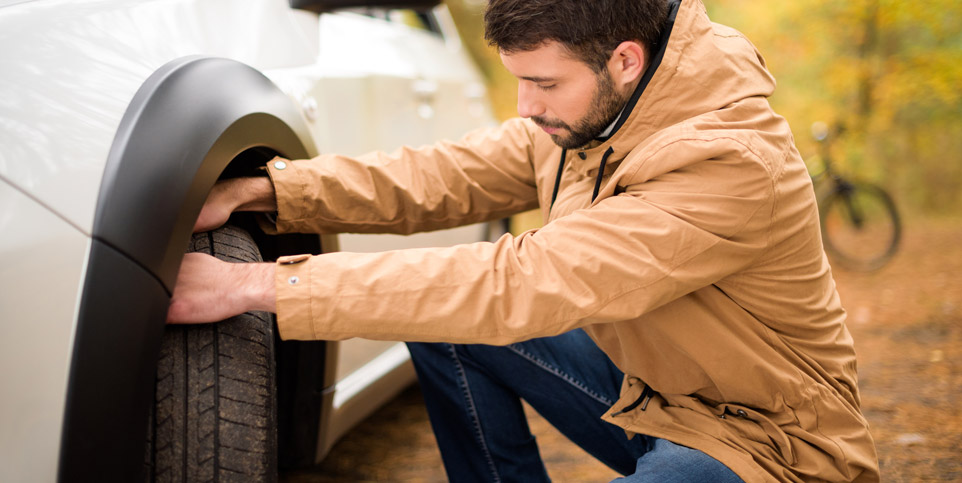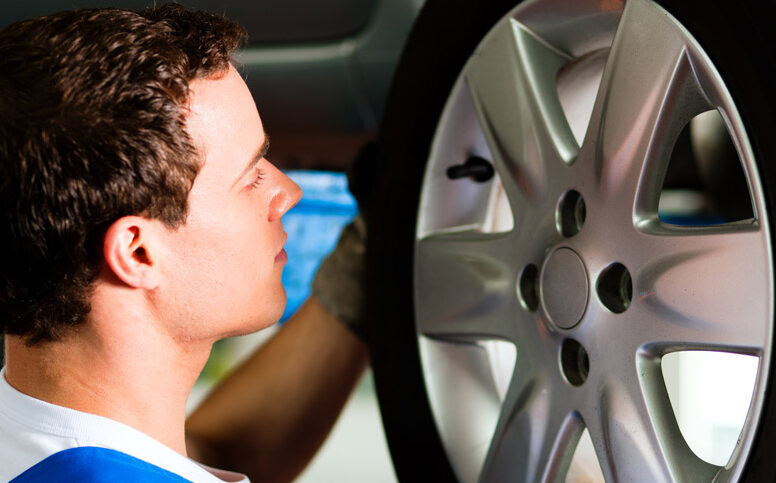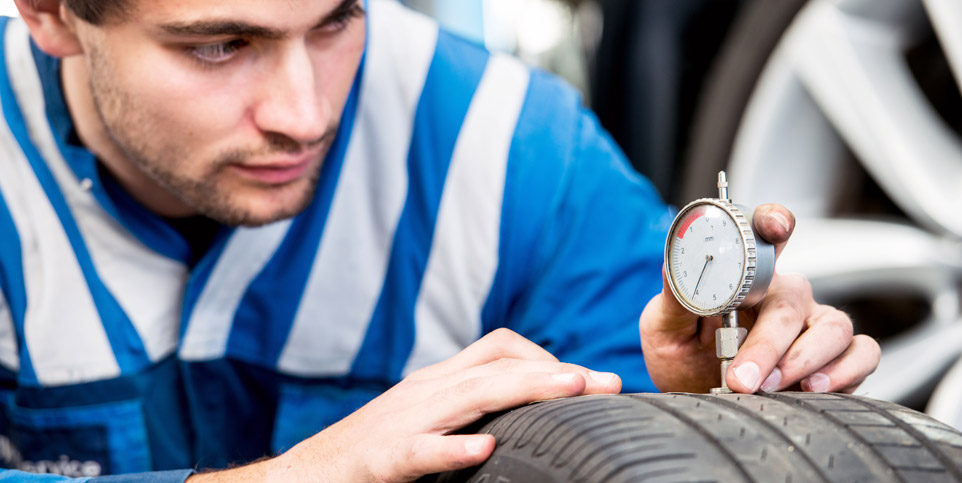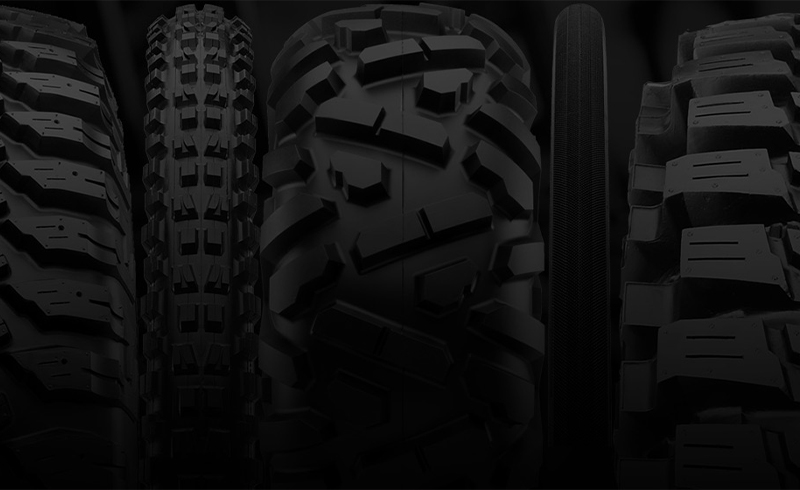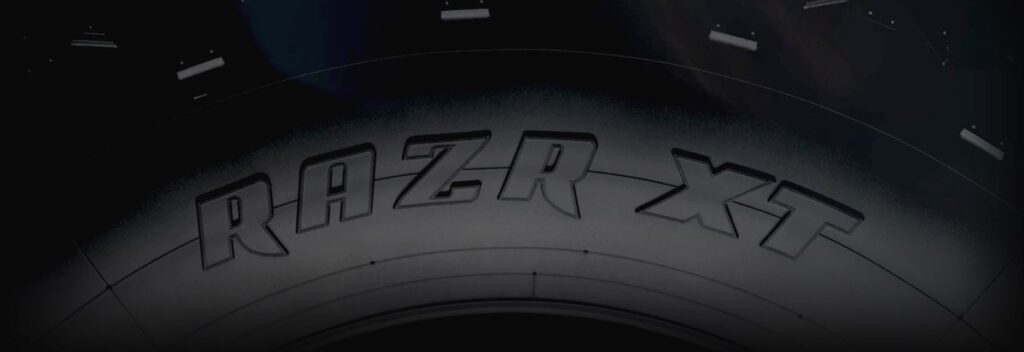Types of Tyres
Tyre anatomy
The modern tyre is an intricately woven mixture of steel belts, advanced fabrics and rubber compounds. A far cry from the solid piece of rubber of early days. Radial tyres have become the industry standard, displaying many advantages over cross-ply tyres, in terms of wear, heat resistance and rigidity.
Any car less than 20 years old, should be fitted with radial tyres. Never mix radial and non-radial tyres. It could lead to poor handling and loss of vehicle control.
